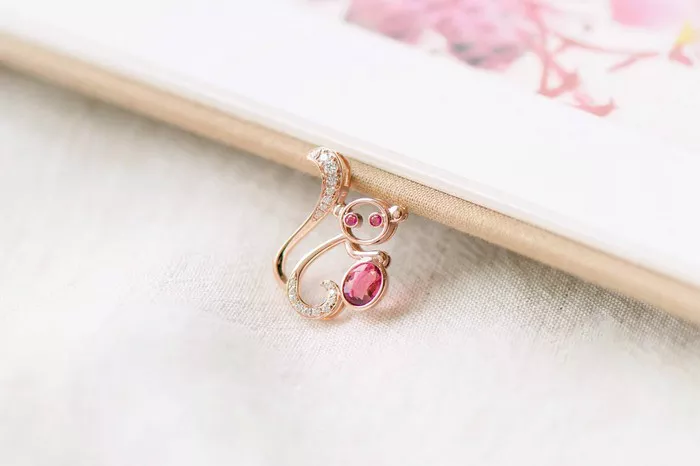Tourmaline, a semi-precious gemstone cherished for its vibrant hues and intricate crystal structure, has long been revered not only for its aesthetic appeal but also for its purported health benefits. From ancient civilizations to modern holistic practitioners, tourmaline has been believed to possess unique properties that promote physical and mental well-being. But what exactly does tourmaline do to your body? In this comprehensive exploration, we delve into the science behind this enigmatic gemstone and examine its potential effects on human health.
Understanding Tourmaline:
Before delving into its purported health benefits, it is essential to understand the composition and properties of tourmaline. Tourmaline belongs to a group of complex borosilicate minerals with a varying chemical composition. Its colors span the spectrum, ranging from black to vibrant hues such as pink, green, blue, and watermelon. This diversity in color arises from variations in its chemical composition and trace elements present within its crystal lattice.
One of the most intriguing properties of tourmaline is its piezoelectric and pyroelectric nature. When subjected to pressure or changes in temperature, tourmaline generates electric charges, making it a unique mineral with potential applications in various fields, including electronics and energy technology.
The Healing Power of Tourmaline:
Throughout history, tourmaline has been associated with numerous healing properties, often attributed to its electromagnetic properties and ability to emit far-infrared radiation (FIR). Advocates of alternative medicine and holistic healing modalities suggest that exposure to tourmaline may result in various health benefits, ranging from pain relief to improved circulation and detoxification. However, the scientific evidence supporting these claims remains limited and often controversial.
1. Far-Infrared Radiation: A Source of Therapeutic Heat
One of the most touted benefits of tourmaline is its ability to emit far-infrared radiation (FIR), a type of electromagnetic radiation with wavelengths longer than those of visible light. FIR is known for its ability to penetrate deeply into the body, generating gentle heat and promoting vasodilation, which may enhance blood circulation and oxygenation of tissues.
Proponents of tourmaline-infused products, such as clothing, bedding, and wellness devices, claim that exposure to FIR emitted by tourmaline can alleviate muscle pain, reduce inflammation, and promote relaxation. While some studies support these assertions, the scientific evidence remains inconclusive, and more rigorous research is needed to validate the therapeutic effects of FIR emitted by tourmaline.
2. Negative Ions: Nature’s Mood Enhancers?
In addition to FIR, tourmaline is also believed to produce negative ions, which are charged particles abundant in natural environments such as forests, mountains, and waterfalls. Negative ions have been associated with various health benefits, including mood enhancement, stress reduction, and improved mental clarity.
Advocates of tourmaline therapy suggest that exposure to negative ions generated by tourmaline can balance the body’s electromagnetic field, counteract the harmful effects of positive ions (often associated with electronic devices and pollution), and promote a sense of well-being. While anecdotal evidence supports these claims, rigorous scientific studies are needed to determine the efficacy of tourmaline in producing negative ions and its impact on human health.
3. Electromagnetic Protection: Shielding Against Harmful EMFs?
In an increasingly digitized world, concerns about the potential health effects of electromagnetic fields (EMFs) emitted by electronic devices have grown. Tourmaline is often touted as a natural solution for mitigating the harmful effects of EMFs due to its purported ability to generate negative ions and neutralize electromagnetic radiation.
While some studies suggest that certain minerals, including tourmaline, may possess electromagnetic shielding properties, the extent to which tourmaline can protect against EMFs remains a subject of debate. More research is needed to elucidate the mechanisms underlying the interaction between tourmaline and electromagnetic radiation and its implications for human health.
4. Grounding and Energy Alignment: Balancing Body and Mind
In addition to its electromagnetic properties, tourmaline is revered in holistic healing traditions for its purported ability to ground and align the body’s energy centers, known as chakras, according to principles derived from traditional Chinese medicine and Ayurveda.
Practitioners of crystal healing and energy medicine often use tourmaline in therapeutic practices aimed at restoring balance and harmony to the body, mind, and spirit. Whether worn as jewelry, placed on specific energy points, or incorporated into meditation practices, tourmaline is believed to facilitate energy flow, dispel negative energies, and promote a sense of stability and vitality.
Conclusion:
In conclusion, tourmaline remains a fascinating subject of exploration, blending ancient wisdom with modern scientific inquiry. While its purported health benefits may intrigue and inspire, the evidence supporting its efficacy remains inconclusive, highlighting the need for further research and rigorous investigation.
Whether viewed as a symbol of beauty, a source of healing energy, or a curious geological phenomenon, tourmaline continues to captivate the imagination and provoke inquiry into the mysteries of the natural world and its potential impact on human health and well-being. As we navigate the complexities of modern life, perhaps the allure of tourmaline lies not only in its tangible properties but also in the timeless quest for understanding and connection with the forces that shape our existence.
In the realm of health and healing, curiosity remains our greatest ally, guiding us on a journey of discovery and empowerment as we explore the intricate interplay between mind, body, and spirit—and the remarkable potential of the world around us, encapsulated within the radiant depths of a humble gemstone: tourmaline.


